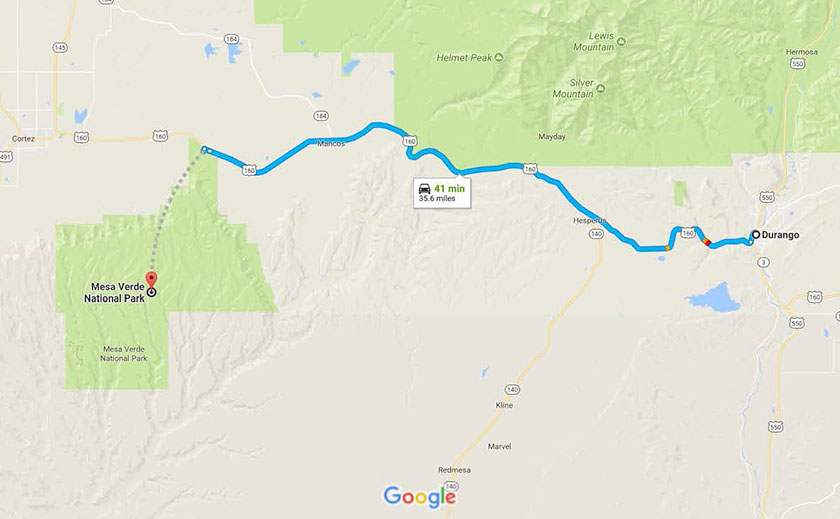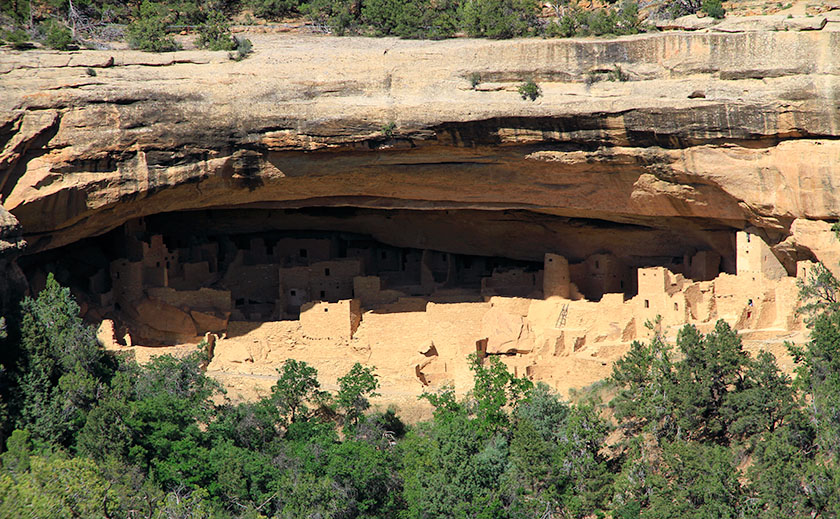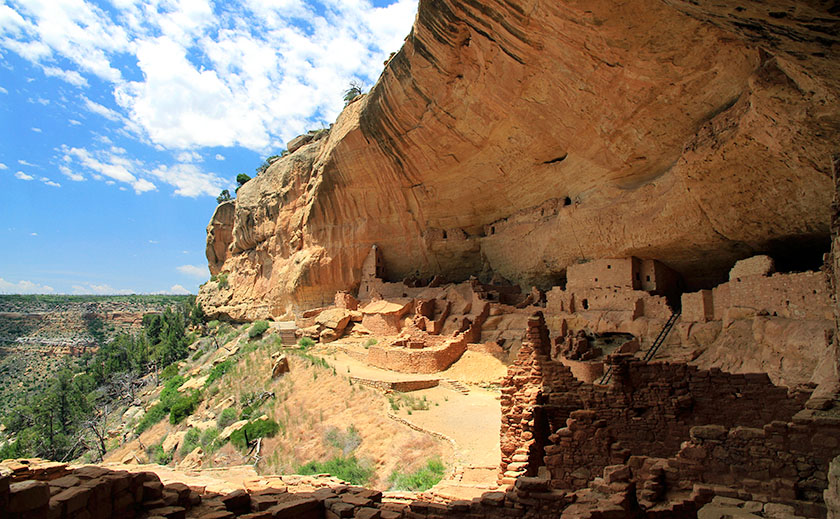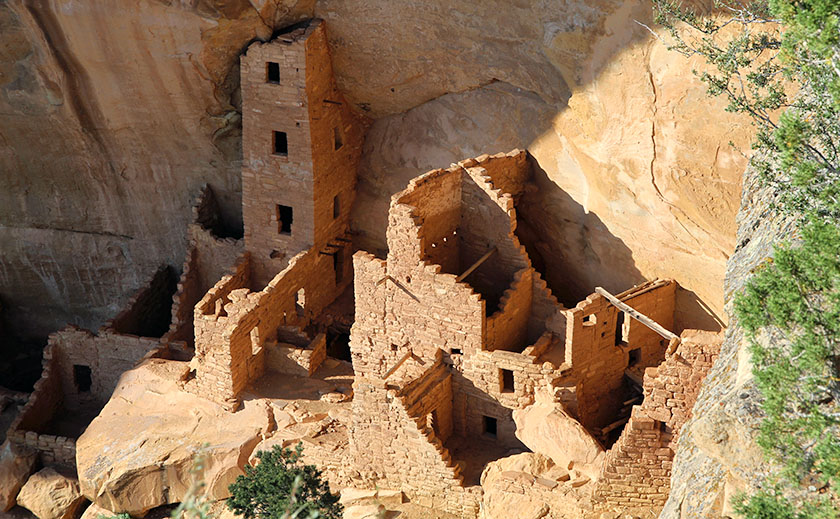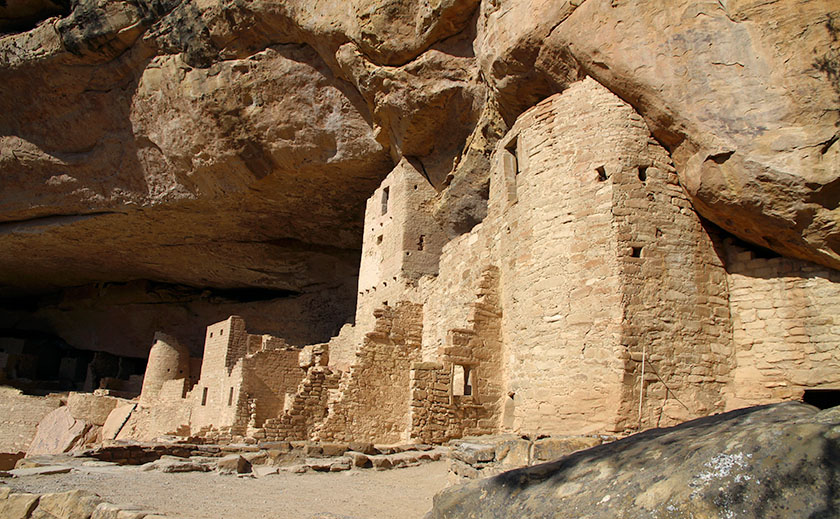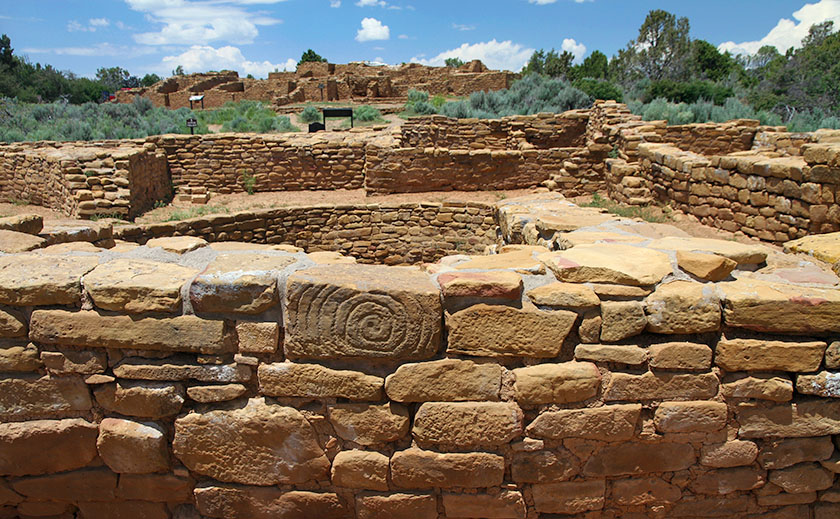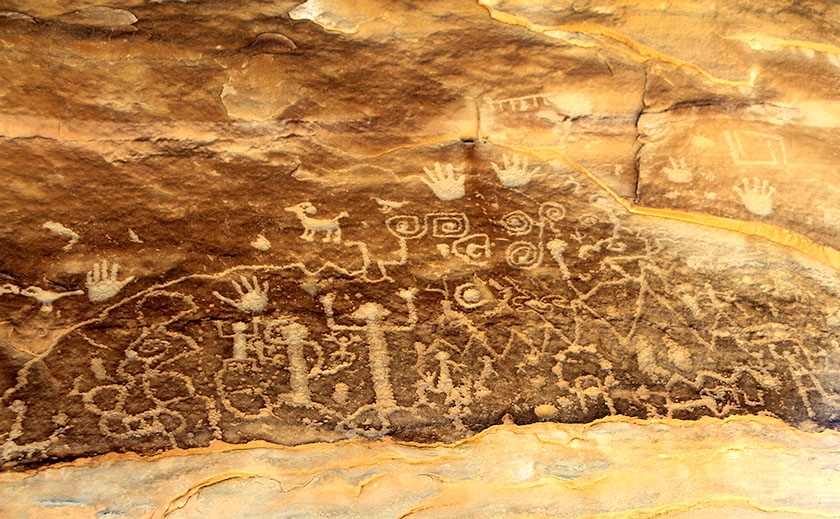It was the Wednesday before July 4th and the Lightner Creek Campground and Cabins staff were making preparations for the busy weekend when our friends and fellow camp hosts – Tony and Amelia – raced into the park. This was unusual because the speed limit is 5 mph and camp hosts try to enforce it. They had just come back from town and breathlessly told us that there was a house on fire just east of the campgrounds. We all rushed up the park’s hill to gawk.
It was the house of our, shall we say, interesting neighbor. She lives there with her kids and they regularly shoot off fireworks and guns. On Memorial Day there were loud gun shots coming from there well into the night which made the campground guests nervous. Someone called the sheriff, but the shots stopped before they got there. One of her other neighbors said there were three loud explosions before the house caught fire. The house was burning very quickly and the color of the flames suggested that a gas fueled the flames. Rumors in the community said that she grew pot and processed something more potent in a back room, but we never verified any of that.
As we stood on the hill, we watched the fully engulfed house, when suddenly the fire jumped to the trees and started up the mountain. We all started panicking and using a lot of four letter words. Thank God the wind was blowing away from us.
Amelia – a 911 dispatcher in a previous life – asked if there was an evacuation plan. Robert and Andrea, the owners, fetched ours from office and contacted its creator – the original owner who lives alone at the campground’s west end. She came over, very upset and helped coördinate the evacuation. The plan broke the campgrounds into sections. The owners assigned camp hosts different sections and sent them to their assigned area with instructions for how each campsite should exit. We told everyone to “prepare to evacuate”. It couldn’t have been more than 15 minutes when we got a “MANDATORY EVACUATION” from Code Red – a must have cell phone app. No matter where you are in the USA, it will send you emergency alerts for your area. When the alert sounded, the camp hosts spread out to their assigned areas and began evacuating the campers. Several people were in Durango then, but we made sure anyone in the campgrounds knew they had to leave. After we got the guests out, Deb and I started to hook up our trailer, but before we could, a sheriff showed up in front of our rig and said we had to leave; NOW! So we started throwing stuff in the truck and car and abandoned the trailer. I had time to put in the awnings and turn off the propane, but that was it. A personal evacuation plan for our RV is on my to-do list from now on.
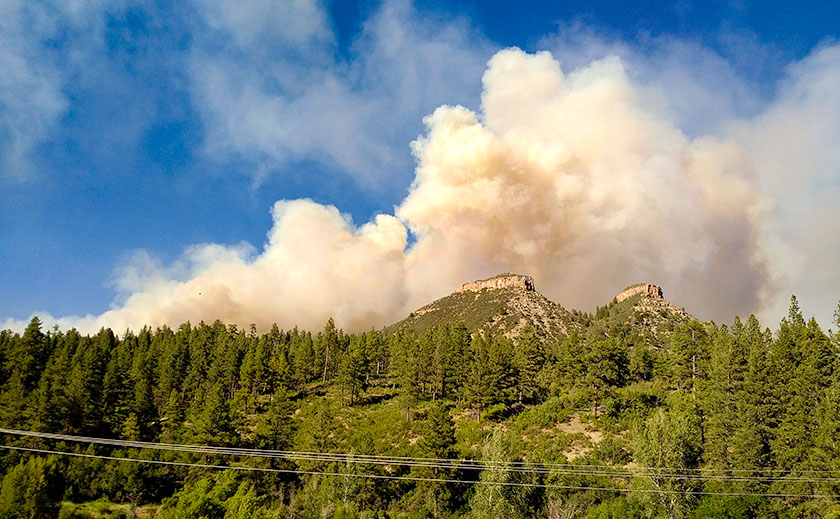
The campground is in a box canyon and the only way out was down the road toward the fire. The wind was blowing the fire away from us, but it had jumped the road and started up Perins Peak to the north. The fire had jumped across high enough that the road was not blocked. We drove through a maze of fire trucks but finally made it to Hwy 160. We assembled on the side of the highway and wondered what to do. We could see the smoke billowing out of the canyon and flames crawling up Perins Peak. We didn’t know if we would have anything to return to, but we got everyone out safely.
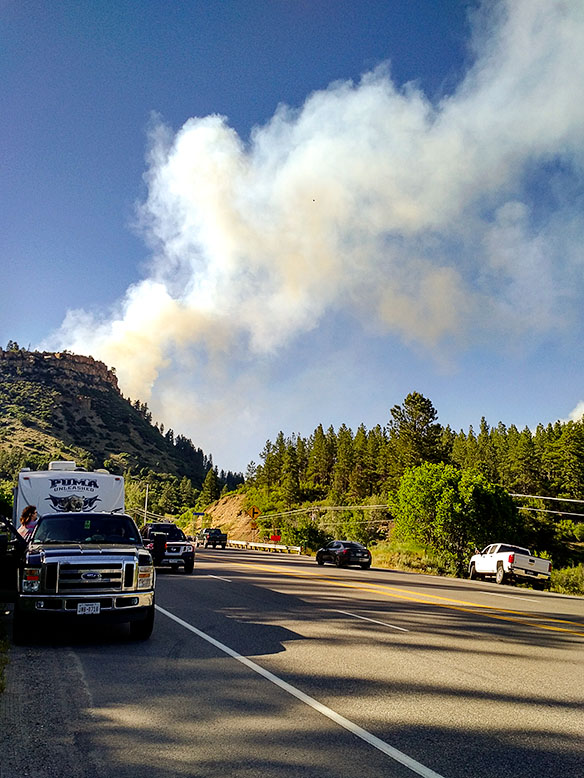
One of the guests in the group got word that the Red Cross was at the La Plata County Fairgrounds setting up an evacuation center. A seasoned camp host knew where it was, so most of us followed him. Wouldn’t you know it, the fairgrounds booked a rodeo for the holiday and the parking lot was full. Trailers and motorhomes were redirected to the high school parking lot next door. The next day the shelter moved to the Escalante Middle School which had a big parking lot for rigs. The Rocky Mountain Team Black Hotshot fire fighters moved into the fairground shelter. By the way, the Red Cross was great! They provided a place to sleep, water, snacks, and food – donated by various town restaurants.
Deb and I opted for a hotel room instead of trying to sleep in a dormitory full of kids, dogs, and people. When I got on the phone I found out that most of the hotels were booked for the big weekend. I finally found a room at the Holiday Inn, and we spent two nights there until they let us go retrieve our trailer. One at a time, a sheriff escorted the camp hosts in to hook up trailers then get out. The fire was only 20% contained so planes were flying over us while helicopters picked up water from trout ponds close to the road. Some idiot was flying a drone in restricted air space and delayed air operations a day (he was later found and he’s facing charges).
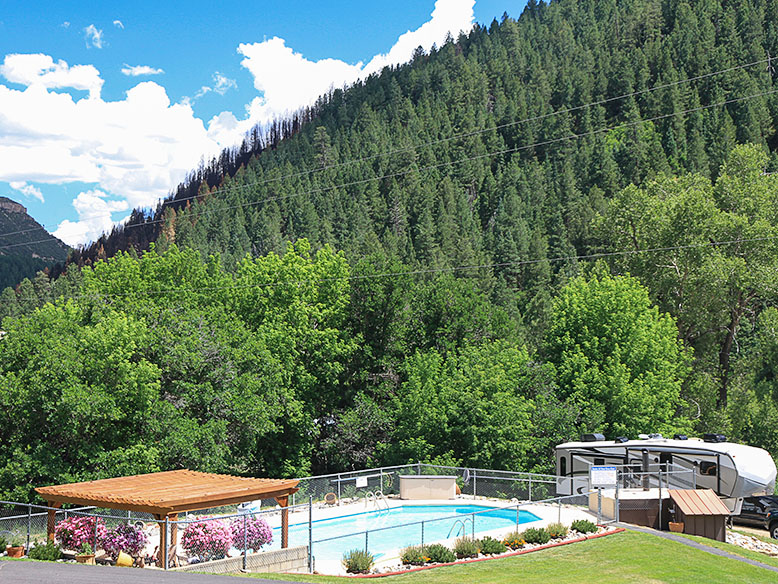
It was a relief pulling our rig out of the park. We headed straight for the middle school parking lot where we dry camped for two nights. The Red Cross commandeered the dining room and they organized a big meeting on the fire’s fourth day with all the players; fire fighters, police, sheriffs, etc. who gave us the status of the fire. Denver TV stations filmed the meeting and we made the evening news. They told us that the fire was still only 20% contained, but they were letting some homeowners return to their homes. Since we were not home owners but were permanent summer residents, officials excepted the camp hosts and they issued us special Rapid Access ID cards. The next day they let us go back to the campgrounds. Whoopee! The road was still closed to the public and we couldn’t take any guests yet, but we were back in our summer home.
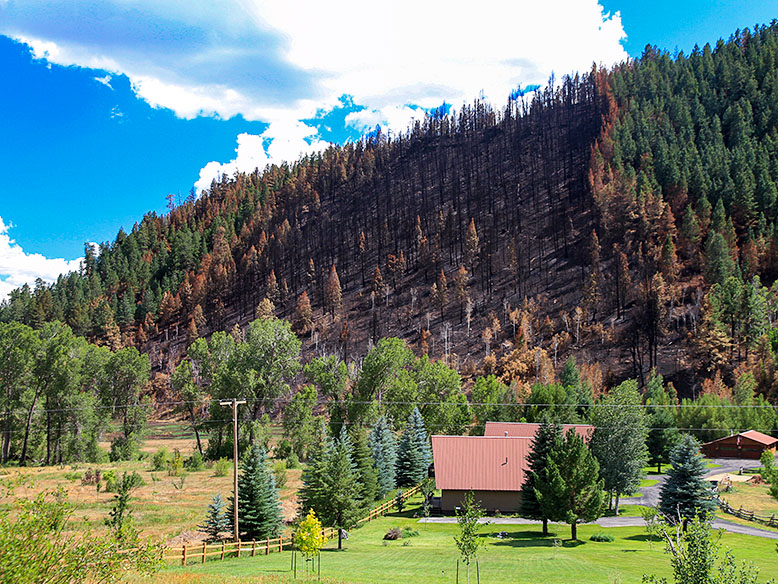
Since we had the campgrounds to ourselves, we threw a 4th of July Bar-B-Que. The campground wasn’t burned at all, and the facilities were fine. The fire came closer than we thought, but it did not cross the boundary. We were very lucky. There were a lot of cancellations for the 4th of July week, but we are now back up to full capacity and it is still a great place to spend the summer.
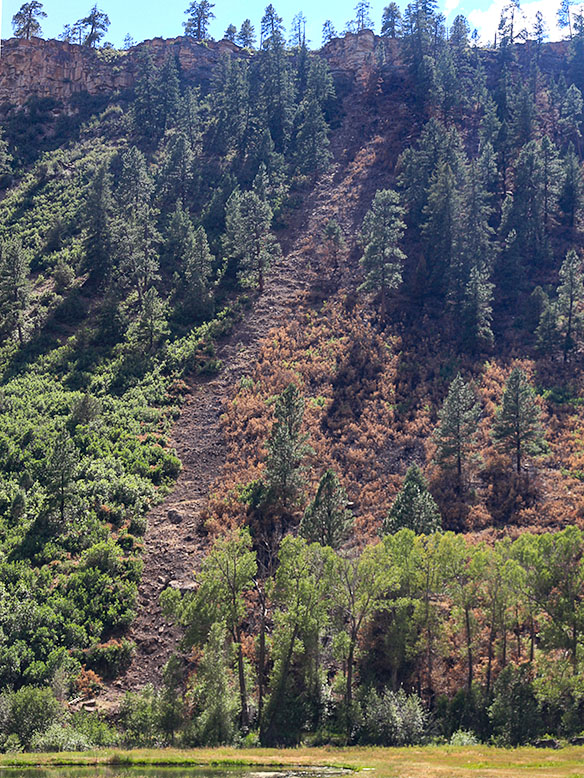
They have not identified the reason the house caught on fire, but it was very suspicious. Since the house was destroyed and the fire was so hot, the fire investigators couldn’t find the fire’s cause. As for our interesting neighbor … she wasn’t at home when the fire started, but she did check into the evacuation shelter, so she’s homeless but otherwise ok.
Fred Poteet

